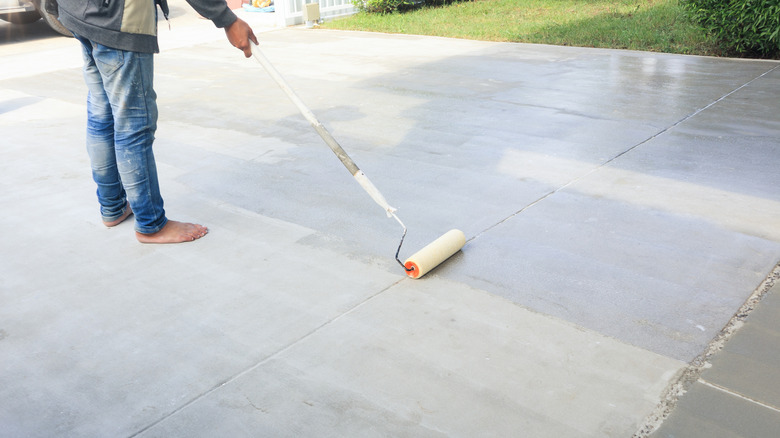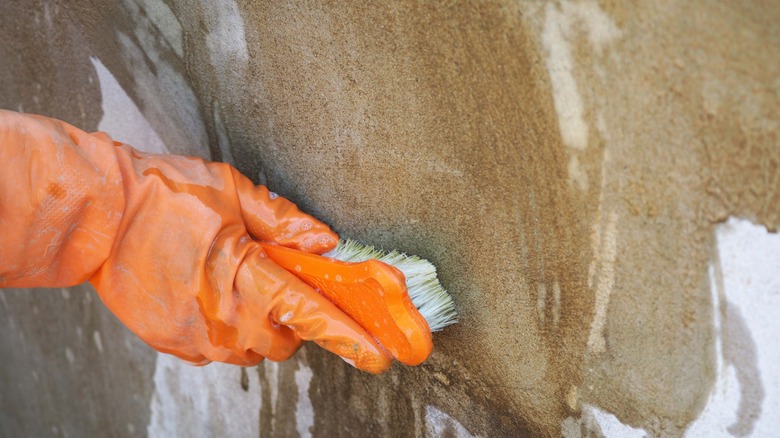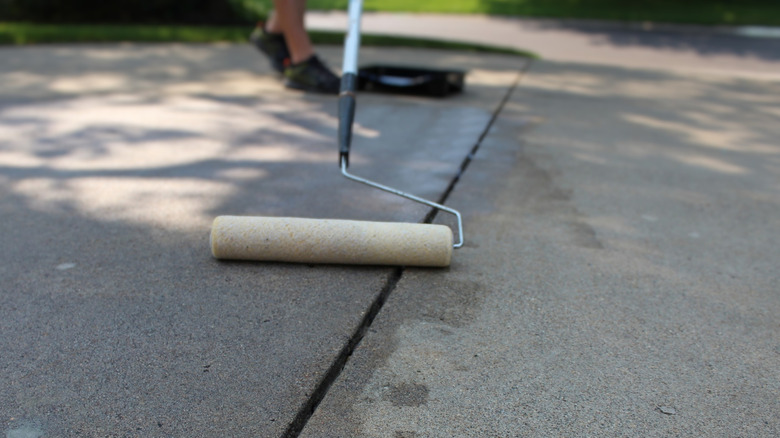Avoid These Common Mistakes Everyone Makes When Staining Concrete
If you're looking to completely transform the look and feel of a concrete surface, then staining is the way to go. The process not only allows you to change the color of concrete but gives you the chance to mimic the look of other materials like wood. But, like any other DIY project, concrete staining requires research and careful preparation to achieve the best results for your home. One mistake you want to avoid is using the wrong type of stain.
Because concrete is a highly porous material, it's fairly easy to achieve a wide variety of colors and looks by staining. However, there are several types of concrete stains available, including water-based, solvent-based, acetone-based, acid-based, and tinted sealers. The stain you choose depends on what you want to achieve with your project. For example, acid-based stains are great for achieving a marbled look. However, they work by causing a chemical reaction with your concrete, so once an acid stain is applied, it cannot be reversed. On the other hand, water-based stains simply deposit color into concrete's pores. You can use it to get vibrant colors like yellows, blues, and greens, and you can also change it in the future.
Many staining products include volatile organic compounds (VOCs). Exposure to these gasses can cause respiratory issues and other side effects like dizziness, headaches, and even a loss of consciousness. You can find concrete stains with no or little VOCs by searching for organic or environmentally friendly products. In general, water-based stains like Direct Colors' Water Based Concrete Stain are zero or low VOC. Regardless of which type you pick, you should still have protection like gloves, safety goggles, and covering your skin to avoid any product getting on you.
Make sure that you're working with a clean surface
Okay — you picked your stain, donned your protective gear, and even swept up the area a bit. You're ready to start staining, right? Not so fast. When staining concrete, you're looking to alter your floor's appearance beyond its surface, which means that you need a beyond surface-level clean.
One common issue that can completely ruin your project if not addressed are pre-existing stains from oil, pet urine, grease, rust, and more. Sometimes these stains are invisible to the naked eye when your floor is dry. Because of this, you should always clean your floor by scrubbing it with a bristle brush, concrete cleaner, and water, regardless of if you notice any marks. This will not only lift any debris that sweeping missed but allow you to see any stains that otherwise weren't visible. You can then bring your stained concrete back to life with diluted ammonia or even use household products to banish stains from your patio concrete.
After dealing with any existing stains, you also need to throughly check your floor for crack and holes. These also need to be addressed before you can begin your project. Luckily, repairing cracks in concrete by yourself isn't too difficult as long as they aren't sizable ones. Once those repairs are done, follow the manufacturer's instructions of your stain and apply a small portion to your floor. Allow the stain to dry throughly and, if you are happy with the test results, you can begin applying it to the rest of the room.
The job isn't finished after staining, though
Another detrimental mistake that many people make is assuming that your project is done as soon as your stain is down. In order to see the best results, you need to apply a sealant, too. This product forms a barrier on top of your concrete that will protect your stain from wear and tear, repel stains, and more. As an added bonus, sealant can also enhance the color of your stain.
Like stains, sealants come in a variety of types including epoxy, acrylic, polyurethane, and polyaspartic. Each has its own strengths and weaknesses, so you should look into each type of sealant to determine the best option for your floor and stain. Before applying, do another test on a small area of your floor. If everything looks good, you can apply your sealant all over by either spraying or rolling it on. Just make sure that you don't apply the sealant too thick — these products are supposed to dry quickly but using too much can interfere with that.
Depending on how much activity your concrete sees, you may also want to add a second coat after the first dries to the touch. However, once finished, you want to leave your floor alone for at least 24 to 48 hours depending on the manufacturer's instructions to allow your sealant to fully dry. That means don't move any furniture, drive cars, or otherwise bother your floor so that you can enjoy the results of your stain for years to come.


